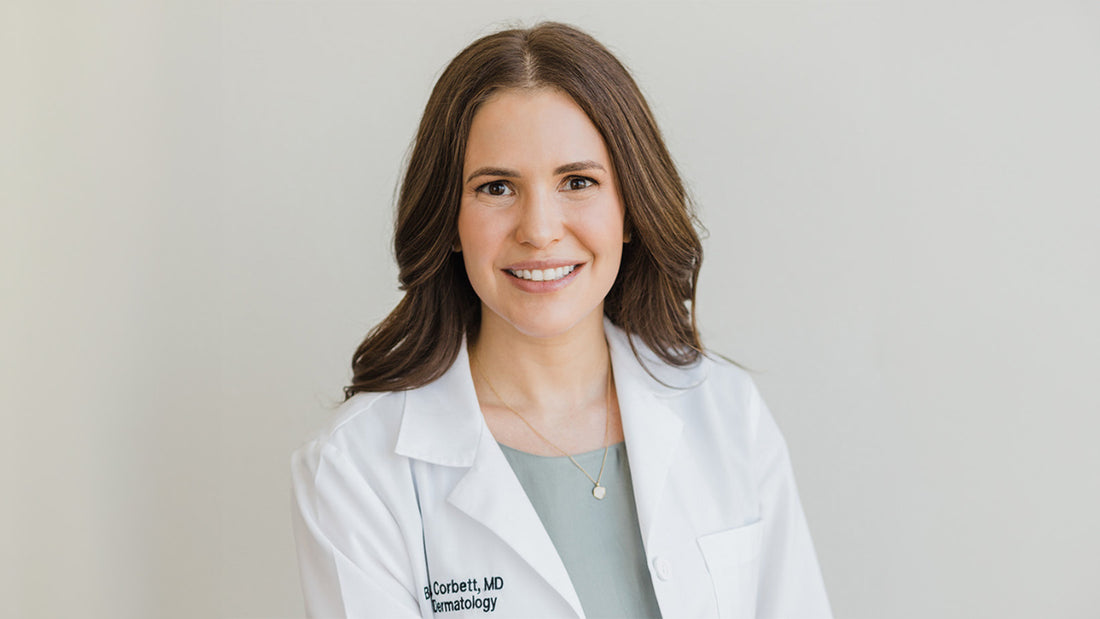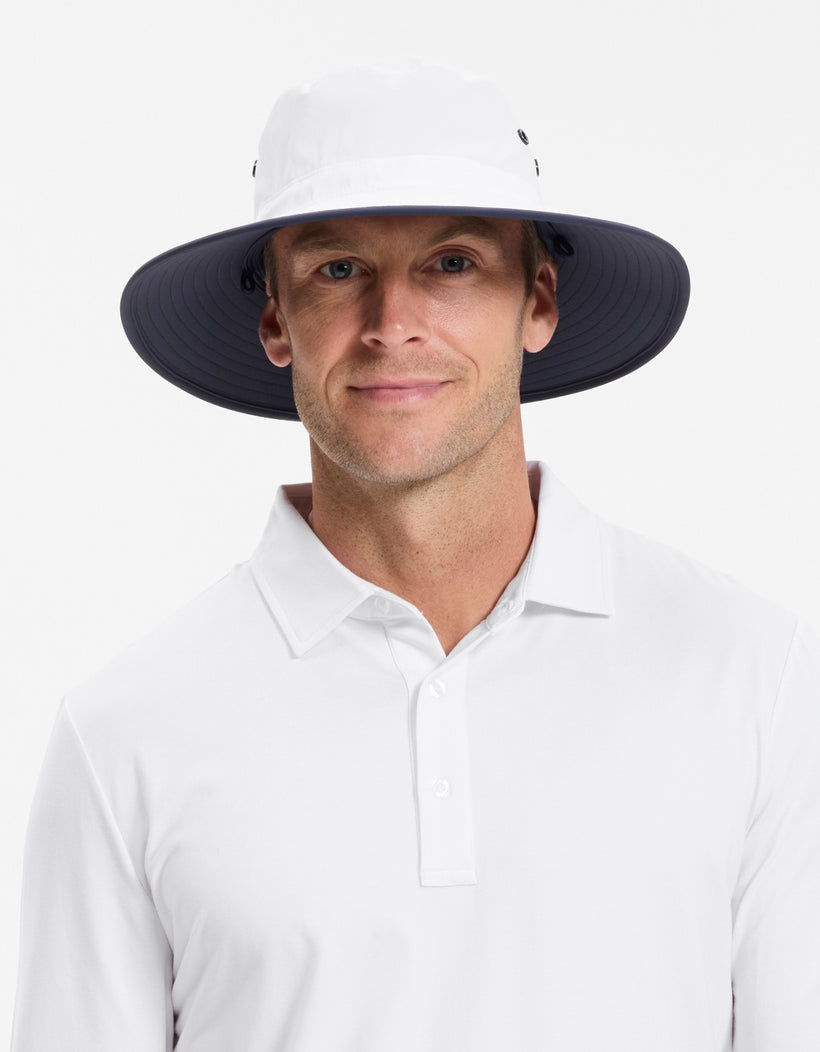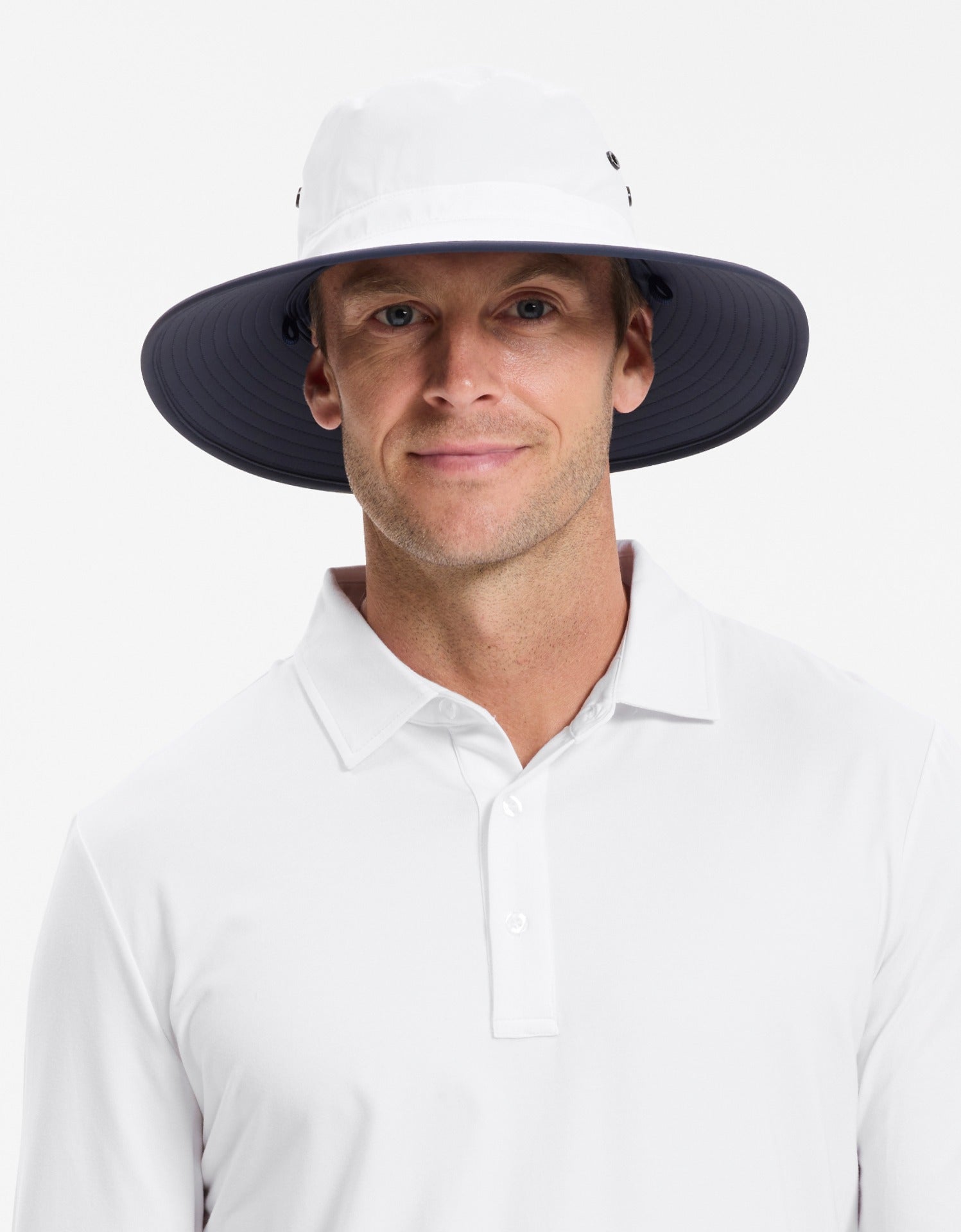Skin Cancer Awareness with Dr Brooke Corbett

We caught up with Dr Brooke Corbett for Skin Cancer Awareness Month to chat about skin cancer facts, prevention and early detection.
Brooke Corbett, MD, FAAD, is a board-certified dermatologist who practices medical and cosmetic dermatology in Las Vegas, Nevada. She is also an Assistant Clinical Professor at the UNLV Kirk Kerkorian School of Medicine. She has studied bioengineering at the University of Pennsylvania, earned her medical degree at the NYU Grossman School of Medicine, and completed her dermatology residency at the University of Wisconsin-Madison, where she served as Chief Resident.
She is passionate about educating patients on sun safety and the prevention of skin cancer, both in clinic and to a wider audience on social media. In her spare time, Dr. Corbett loves to read, play tennis, and spend time with her daughters.
What are the primary causes and risk factors for developing skin cancer?
There are multiple factors for developing skin cancer, including fair skin tone, number of moles, family history, age, gender, exposure to certain substances and immune system function. The number one modifiable risk factor for developing all types of skin cancer is exposure to UV radiation from the sun and tanning beds.
Can you explain the different types of skin cancer and their characteristics?
There are four major types of skin cancer:
- Basal cell carcinoma (BCC). BCC is the most common form of skin cancer. It forms from the basal layer of keratinocytes in our epidermis. BCC typically presents as a pearly pink bump or patch of skin but can have many different appearances. BCCs grow slowly and rarely spread to the rest of the body, but if left untreated, can grow, hurt, bleed and ulcerate.
- Squamous cell carcinoma (SCC). SCC is the second most common form of skin cancer. It forms from the squamous layer of keratinocytes in our epidermis. SCC typically presents as a firm, bright pink, scaly bump, but can have many different appearances. SCC can spread to other parts of the body if left untreated.
- Melanoma is the most dangerous and aggressive form of skin cancer. It forms from melanocyte cells which provide pigment to our skin. Melanoma typically presents as a large, asymmetric mole with irregular borders, and varying colours. Melanoma can form within an existing mole, but more commonly develops on its own. Melanoma can spread to other parts of the body and be dangerous if not caught early.
- Merkel cell carcinoma (MCC) is a rare and aggressive form of skin cancer. It forms from Merkel cells within the skin, which are a part of the skin’s immune system. MCC typically presents as a pink or skin coloured bump on sun exposed areas of the body. MCC can spread to other parts of the body and be dangerous if not caught early.
How does skin cancer typically form at a cellular level, and what role do UV rays play in this process?
Skin cancer forms at the cellular level due to genetic mutations caused primarily by excessive exposure to UV radiation from the sun or other sources, such as tanning beds. UV rays penetrate the epidermis and dermis, causing damage to the skin cells’ DNA. These DNA alterations can lead to genetic mutations if the cell's repair mechanisms fail to correct the damage properly. These mutations can affect genes that regulate cell growth, division, and apoptosis, leading to uncontrolled cell proliferation and the formation of cancerous cells.
How frequently should individuals perform self-examinations of their skin, and what signs or changes should they look for?
Regular self-skin exams, combined with annual skin checks by a board-certified dermatologist, are an important step in early detection of skin cancer. I recommend getting to know your skin and the general characteristics of the moles your body makes. Most people have a “mole signature,” meaning most of their moles have similar characteristics such as size, shape, and colour. I recommend self-skin exams at home once monthly to check for any moles that are new, changing or look different from your typical mole signature (i.e. the “ugly duckling). If you have any moles or lesions that seem suspicious to you, you should see your dermatologist to have them professionally evaluated.
What are the key warning signs of skin cancer, and when should someone seek professional evaluation for a suspicious mole or lesion?
The classic warning signs of melanoma can easily be remembered as the “ABCDEs of melanoma.”
Asymmetry: If you drew a line down the middle of the mole, would both sides look the same?
Border: Are the borders smooth and round, or ragged and irregular?
Colour: Is the mole one, single, even colour? Or does it contain multiple colours
Diameter: Is the mole greater than 6mm?
Evolution: Is the mole changing over time or has it stayed the same?
Other warning signs include if the lesion is painful, bleeds, ulcerates or growing quickly.
What are the most effective preventative measures individuals can take to reduce their risk of developing skin cancer?
There are several preventative measures you can take to reduce your risk of developing skin cancer. The most important preventative measure is reducing exposure to UV radiation. I recommend completely avoiding tanning beds and taking protective measures while enjoying the outdoors, such as wearing sun protective clothing, wide-brimmed hats, frequent sunscreen application, staying in the shade and avoiding outdoor activities during the hours of peak sun exposure. I also recommend wellness practices that keep your immune system healthy, such as a healthy diet, exercise, stress reduction and avoiding unhealthy behaviours such as smoking and drinking alcohol. If you have certain risk factors for skin cancer, such as fair skin, >50 moles or a family history of skin cancer, I recommend getting annual skin exams by a board-certified dermatologist.
In your opinion, what are the main factors contributing to the rising rates of skin cancer globally?
Skin cancer rates continue to rise globally. In my opinion this is due to a confluence of multiple factors, such as rise in use of indoor tanning beds, depletion in the protective ozone layer via climate change, and misinformation on social media about the risks of sun exposure. Fortunately, the detection of skin cancer has also improved which leads to a higher rate of diagnosis.
What do you wish people knew about skin cancer?
I wish people knew how common skin cancer is. In the USA, approximately 1 in 5 people will develop some form of skin cancer in their lifetime. Many young people do not practice sun safety thinking they will never develop skin cancer, and then spend the final decades of their life in my office getting frequent surgeries for their skin cancer.
I wish people knew how easy practicing sun safety can be. When you say, “sun protection,” most people envision goopy, thick, paste-y sunscreen. Now we have so many different forms of sunscreen that look good and are easy to apply, such as sunscreen in makeup, sunscreen powders and oils. Sun protective clothing also requires no sunscreen application!
What advancements have been made in skin cancer detection and treatment in recent years, and how do these developments benefit patients?
In recent years, there have been several significant advancements in skin cancer detection that have greatly benefited patients. Dermoscopy has greatly aided our ability to evaluate suspicious lesions and increased our ability to detect skin cancer. This non-invasive technique uses a handheld device with a magnifying lens and polarised light, allowing for better visualisation of structures within moles and lesions. Total body photography uses high-resolution imaging of the entire skin surface to help track changes in moles and lesions over time, aiding in early detection in high-risk patients. I believe the future of skin cancer detection will use artificial intelligence (AI) and machine learning to assist in skin cancer recognition and detection.
Treatment-wise, immunotherapies have completely revolutionized the treatment of malignant melanoma and improved survival. Immunotherapies, such as checkpoint inhibitors, harness the body's immune system to recognize and attack cancer cells, leading to improved outcomes in advanced melanoma cases.
What role do UPF-rated clothing, sun hats and accessories play in comprehensive sun protection strategies, especially for individuals with a history of skin cancer or heightened sun sensitivity?
UPF-rated clothing, hats and accessories are essential to comprehensive sun protection. UPF-rated clothing acts as a physical barrier, shielding the covered areas of the skin from direct exposure to UV rays. Hats with a wide brim and UPF-rated fabrics can protect vulnerable areas like the face, neck, and ears, which are often overlooked and prone to sun damage. Unlike sunscreen, which can wear off or be applied unevenly, UPF-rated clothing provides consistent protection throughout the day. This is particularly important for individuals with a history of skin cancer or those with photosensitive conditions, as even brief sun exposure can be detrimental.
Are there any misconceptions or common mistakes people make when selecting UPF-rated clothing or relying solely on sunscreen for sun protection?
People often do not apply enough sunscreen and re-apply enough for comprehensive sun protection. The proper amount of sunscreen to cover one’s entire body is about 1.5 oz, or about the size of a shot glass. Sunscreen also has a lifespan of about 2 hours so re-application is key. If you are going in the water or sweating heavily, I recommend reapplying every hour. In most athletic outdoor activities, I do find it cumbersome to reapply sunscreen that often. These are the times where I find UPF-rated clothing essential—playing sports, swimming in the pool with my kids, or long hikes.
How do you include sun safety practices in your daily routine?
Sun safety is an essential part of my daily routine. I apply a mineral sunscreen to my face every morning under my makeup. I love to wear my Solbari UPF50+ Driving Gloves in my car on my daily commute to work. I keep a wide-brimmed hat in my car to protect from sun exposure on everyday errands. On the weekends, I am most often outside with my kids, either swimming in the pool or playing at the park. I always wear UPF-rated clothing and wide-brimmed hats during these activities (and dress my kids in them too!) because I want to focus on having fun and not reapplying sunscreen.












